Raj Mungfali-3 (RG 559-3)’ a High Yielding, Large Seeded Virginia Bunch Groundnut Variety released for commercial cultivation in North-Western zone (Rajasthan, Punjab and Uttar Pradesh) during kharif season
A new groundnut variety, Raj Mungfali-3 (RG 559-3)’, was released in 2016 by the Central Sub-Committee on Crop Standards, Release and Notification of Varieties, Ministry of Agriculture, Government of India for cultivation in kharif season (June–October) in the states of Rajasthan, Punjab and Uttar Pradesh of India (Zone I). ‘Raj Mungfali-3 is a Virginia bunch (Arachis hypogaea ssp hypogaea var. hypogaea) variety bred at the ICAR-Directorate of Groundnut Research, Junagadh, Gujarat through a three way cross (TKG 19A x Kadiri-3) x TKG19A (Fig. 1). The breeding material was supplied by ICAR-DGR, Junagadh at F6 stage to RARI, Durgapura one of centres of AICRP-G under SKNAU, Jobner Rajasthan who proposed this genotype for for multi-locational testing and release.

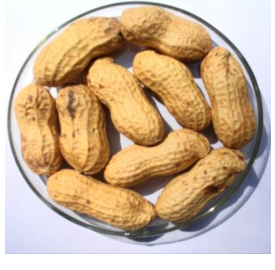
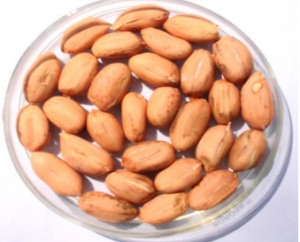 Figure 1. Plant type, pod and kernel features of RG 559-3
Salient features
Figure 1. Plant type, pod and kernel features of RG 559-3
Salient features
- Raj Mungfali 3 is high yielding Virginia Bunch genotype with medium maturity (125 days).
- Raj Mungfali 3 has given higher (3173 kg/ha) pod yield over the all zonal check varieties— 21.8% increase over Girnar 2 (2605 kg/ha); 22.4 % over GG 21 (2592 kg/ha); 17.7% over HNG 69 (2696 kg/ha); 28.8% over Utkarsh (2463 kg/ha); 17.0% over CSMG 19 (2713 kg/ha); 17.4% over Raj Mungfali-1 (2703 kg/ha) and 23.7% over HNG 123 (2564 kg/ha).
- Similarly for kernel yield (2201 kg/ha) RG 559-3 gave 25.2% increase over Girnar 2 (1757 kg/ha); 23.4 % over GG 21 (1783 kg/ha); 20.5% over HNG 69 (1828 kg/ha); 29.8% over Utkarsh (1696 kg/ha); 19.3% over CSMG 19 (1845 kg/ha); 26.5% over Raj Mungfali-1 (1843 kg/ha) and 19.4% over HNG 123 (1740 kg/ha).
- Shelling-turn over is high (69%) in Raj Mungfalli with extra large seeds (65g/100 Kernels) compared to all check varieties [Girnar 2 (58 g), GG 21 (53 g) HNG 69 (59 g), CSMG 19 (60 g), Raj mungfali-1 (54g) and HNG 123 (57 g)].
- Owing to its extra-large seeds, the variety Raj Munfalli-3 fetches Rs. 1000/quintal additioanlly compared to other varieties in the market. Thus additional income to the farmer by growing this variety is Rs 5000-7000/-per ha.
- The fodder yield is also very high (2500-3000 kg/ha) in Raj Munfalli-3 which would generate an income Rs 8000-10000/-.
- Oil content is high (49%) in Raj Mungfali 3 and has yielded 1078 kg/ha of oil per ha which is 21-32% higher compared to other check varieties.
- Incidences of Peanut Bud Necrosis, Late Leaf Spot and rust diseases in Raj Mungfali 3 are lower compared to zonal check varieties resulting in qualitative and quantitative improvement in groundnut fodder.
- Raj mungfali 3 has shown tolerance against Spodoptera litura, leaf miner, leaf hopper and thrips leading to reduction in 10-15% cost saving under plant protection.
ALG 06-320’ a high yielding Spanish Bunch Groundnut Variety released for commercial cultivation in Tamil Nadu and Andhra Pradesh during rabi-summer season
A new groundnut variety, ‘ALG 06-320’, (Fig. 1) was released in 2017 by the Central Sub-Committee on Crop Standards, Release and Notification of Varieties, Ministry of Agriculture, Government of India for cultivation in rabi-summer season (Jan–Aril) in the states of Tamil Nadu and Andhra Pradesh India (Zone IIIb). ‘ALG 06-320’ is a Spanish bunch (Arachis hypogaea ssp hypogaea var. hypogaea) variety bred by ICRISAT and identified as promising and proposed for multi-locational testing and release by TNAUAliyarnagar. It is a cross derivative of a three-way cross (J 11 x CG 52) x ICGV 86015.
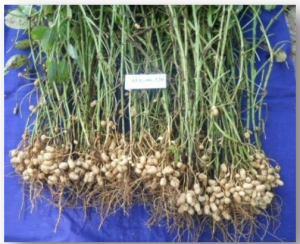
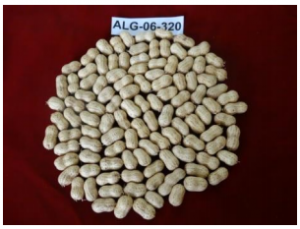
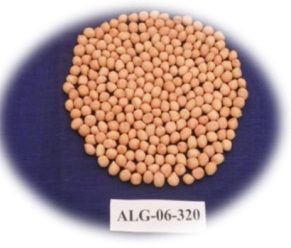 Figure 1. Plant type, pod and kernel features of ALG 06-320
Salient features
Figure 1. Plant type, pod and kernel features of ALG 06-320
Salient features
- ‘ALG 06 320’ is a high yielding medium maturing (115 days) Spanish Bunch variety recommended for cultivation in a rabi-summer season under irrigation in the states of Tamil Nadu and Andhra Pradesh (Zone IIIb).
- In the multiplication testing of AICRP-Groundnut, ALG 06 320 has given higher pod yield (2741 kg/ha) over the popular check varieties; 33.1 % increase over TAG 24 and 29.1 % over zonal check variety R 8808
- For kernel yield (1931 kg/ha), this variety gave 33.1% increase over TAG 24 (1389 kg/ha); 29.0 % over R 8808 (1435 kg/ha); 7.2% over ICGV 00350 (1697 kg/ha)
- Shelling out-turn of this variety, ALG 06 320 is very high (71%) than the zonal check varieties, R 8808 (67.7%), TAG 24 (67.7%) and ICGV 00350 (66.0%) and over the other recently released groundnut varieties for the region namely CTMG 6 (67.0%) and RHRG 06021 (66.0%),
- The proportion of Sound Mature Kernels (SMK) is more in ALG 06 320 (90%) compared to zonal check varieties.
- The oil content of ALG 06 320 is also high (51%) over the popular varieties TAG 24 (49.3%) and R 8808 (49.7%) the check varieties of this zone.
- Peanut Bud Necrosis (PBND), Late Leaf Spot (LLS) and rust diseases are predominant in Andhra Pradesh and Tamil Nadu in rabi-summer, and the variety ALG 06- 320 has shown lesser incidences compared to all the zonal check varieties resulting in 15-20% higher yields.
- The proposed variety ALG 06 320 has shown tolerance against Spodoptera litura, leaf miner, leaf hopper and thrips, the major insect pests of this zone. leading to 15-20% reduction in cost of plant protection chemicals.
- ALG 06-320 responded very well even at lower doses than those of recommended doses of fertilizers indicating high levels of fertilizer/nutrient use efficiency of this variety. The cost saving thus would be Rs 1000-2000/-
Phule Bharati (JL 776)’ a high yielding Spanish Bunch Groundnut Variety released for commercial cultivation in Maharashtra and Madhya Pradesh during kharif season
A new groundnut variety, ‘Phule Bharati’, was released in 2017 by the Central Sub-Committee on Crop Standards, Release and Notification of Varieties, Ministry of Agriculture, Government of India for cultivation in rabi-summer season (Jan–Aril) in the states of Maharashtra and Madhya Pradesh (Zone III). ‘Phule Bharati’ is a Spanish bunch (Arachis hypogaea ssp. fastigiata var. vulgaris) variety bred by ICRISAT and identified by MPKV Jalgaon as promising and proposed for multi-locational testing and release. It is a derivative of a complex cross [(ICGV 92069 x ICGV 93184)SIL4 x ICGV 98300]. The plant and pod features are depicted in Figure. 1.
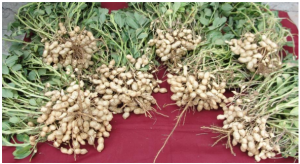 Figure 1. Plant and pod features of JL 776
Salient features
Figure 1. Plant and pod features of JL 776
Salient features
- ‘Phule Bharati’ has been developed at Oilseeds Research Station, MPKV, Jalgaon by the selection which involved rust-resistant wild species Arachis cardenasii in its pedigree.
- Phule Bharati has shown a genetic potential of 35 q/ha under supplementary irrigation
- It has shown a high level of resistance against Spodoptera litura infestation and rust. It is moderately resistant to late leaf spot disease incidence in field conditions.
- This variety is suitable for pre-monsoon/early sowing and gave the highest yield (16.41 % higher yield) even at 75 % recommended dose of fertilizer indicating high fertilizer use efficiency.
- The identified variety has high Hundred Kernel Weight (35 g), shelling outturn (69 %) and Sound Mature Kernel (92 %) over check popular varieties TAG 24 and AK 159.
- Most of the groundnut growing areas in Maharashtra and Madhya Pradesh are rainfed and hence a broad-based cultivar is very essential for stable performance. Phule Bharati, being a derivative of complex cross performs better under harsh environments like mid-season drought and consequent moisture deficit stress
- This variety has also been identified to perform very well in the rabi-summer season and has been recommended for summer cultivation in Maharashtra. The dual season adaptability of this variety facilitates large scale seed production enabling to achieve the desired SRR in a short time
- Phule Bharati responded very well even at lower doses than those of recommended doses of fertilizers indicating high levels of fertilizer/nutrient use efficiency of this variety. The cost-saving thus would be Rs 1000-2000/-
Phule Warna (KDG 128) –A high yielding Virgina Bunch variety released for six different states of India for cultivation in kharif season
A new groundnut variety, ‘Phule Warna, was released in 2017 by the Central Sub-Committee on Crop Standards, Release and Notification of Varieties, Ministry of Agriculture, Government of India for cultivation in Kharif season (June-October) in six different groundnut growing states of India—Gujarat and Rajasthan (south) (Zone II) and Tamil Nadu, Andhra Pradesh, Karnataka and southern Maharashtra (Zone V). ‘Phule Warna’ is a Virginia bunch (Arachis hypogaea ssp hypogaea var. hypogaea) variety bred by ICRISAT and identified by MPKV Digraj as promising and proposed for multi-locational testing and release. It is a derivative of a complex cross (ICGV 87121 X ICGV 87853) X ICGV 92023) X ICGV 98300)]. The plant and pod features are depicted in Figure. 1.
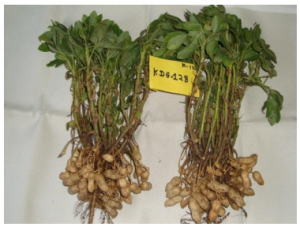
 Figure 1. Plant and pod features of Phule Warna
Salient features
Figure 1. Plant and pod features of Phule Warna
Salient features
- Phule Warna is a broad based genotype developed from a complex cross [(ICGV 87121 X ICGV 87853) X ICGV 92023) X ICGV 98300)] and hence it is adapted widely across six different states
- The variety Phule Warna has given higher dry pod yield (2500-3000 kg/ha) which is 29 to 45% higher over zonal check varieties and popular varieties like GG 20 and Kaushal
- Yield advantage was significantly higher (4100 kg/ha) when sown early thus highly suitable for pre-monsoon sowing
- The identified variety has high Hundred Kernel Weight (40-55 g), shelling outturn (64-69 %) and Sound Mature Kernel (89-92%) over checks GG 20 and Kaushal
- Oil content was 49% and oil yield was 1225 kg to 1470 kg/ha which is 400-500 kg higher over other check and popular varieties
- Resistant to the major foliar fungal diseases (LLS and rust)
Impact
- Phule Warna, being a derivative of complex cross performs better under harsh environments like mid-season drought and consequent moisture deficit stress conditions of Tamil Nadu, AP and Karnataka
- Profit by way of higher yields of Phule Warna would be Rs 4000-Rs. 6000/- per ha.
- Farmers can harvest additional 15 to 25 % pod yield over traditionally grown popular varieties.
- Successful replacement for popular varieties grown in Maharashtra (TMV 10, JL 24), Gujarat (GG 20, GAUG 10), Tamil Nadu (TMV 1, TMV 7)
- Became very popular in a short time (Fig. 2.)
- Due to its ‘stay green’ foliage the fodder quality and quantity is enhanced and income that would accrue through the quality fodder would be around Rs 10,000-Rs 12000/-

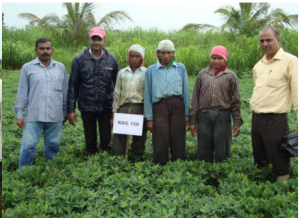
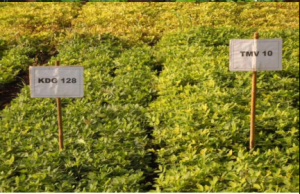
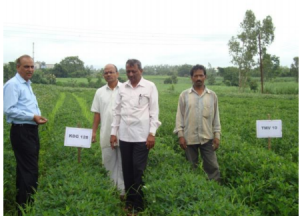 Figure 2. Performance of KDG 128 at farmers field in FLDs
Figure 2. Performance of KDG 128 at farmers field in FLDsPhule Morna (KDG 123) –A high yielding Virgina Bunch variety released for ten different states of India for cultivation in kharif season
A new groundnut variety, ‘Phule Morna, was released in 2017 by the Central Sub-Committee on Crop Standards, Release and Notification of Varieties, Ministry of Agriculture, Government of India for cultivation in kharif season (June-October) in ten different groundnut growing states of India—Gujarat and Rajsathan (south) (Zone II); Odisha, West Bengal, Jharkhand, and Imphal (Zone IV) and Tamil Nadu, Andhra Pradesh, Karnataka and southern Maharashtra (Zone V). ‘Phule Morna is a Virginia bunch (Arachis hypogaea ssp hypogaea var. hypogaea) variety bred by ICRISAT and identified by MPKV Digraj as promising and proposed for multi-locational testing and release. It is a derivative of a cross ICGV 96050X ICGV 96239 . The plant and pod features are depicted in Figure. 1.
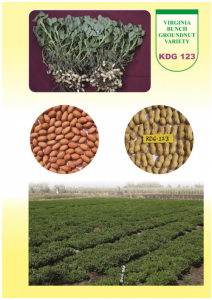
Figure 1. Stay green plant type, pod and kernel features of Phule Morna
Salient features
- The variety Phule Morna has given higher dry pod yield ranging from 20 to 40% in three years of testing against the popular checks GG 20 and Somanath of Gujarat; ICGS 76 and ICGV 86325 of peninsular states.
- The pod yield performance was consistent over the years and locations. The variety has shown a genetic potential of 20-25 q/ha
- Yield advantage was significantly higher (4100 kg/ha) when sown early thus highly suitable for pre-monsoon sowing
- The identified variety has high Hundred Kernel Weight (43-52 g), shelling outturn (70 %) and Sound Mature Kernel (91=98) over checks GG 20 and Somnath and Kaushal
Impact
- Phule Warna, being a derivative of complex cross performs better under harsh environments like mid-season drought and consequent moisture deficit stress conditions of Tamil Nadu, AP and Karnataka
- Profit by way of higher yields of Phule Warna would be Rs 4000-Rs. 6000/- per ha.
- Due to its ‘stay green’ foliage the fodder quality and quantity is enhanced and income that would accrue through the quality fodder would be around Rs 10,000-Rs 12000/-

